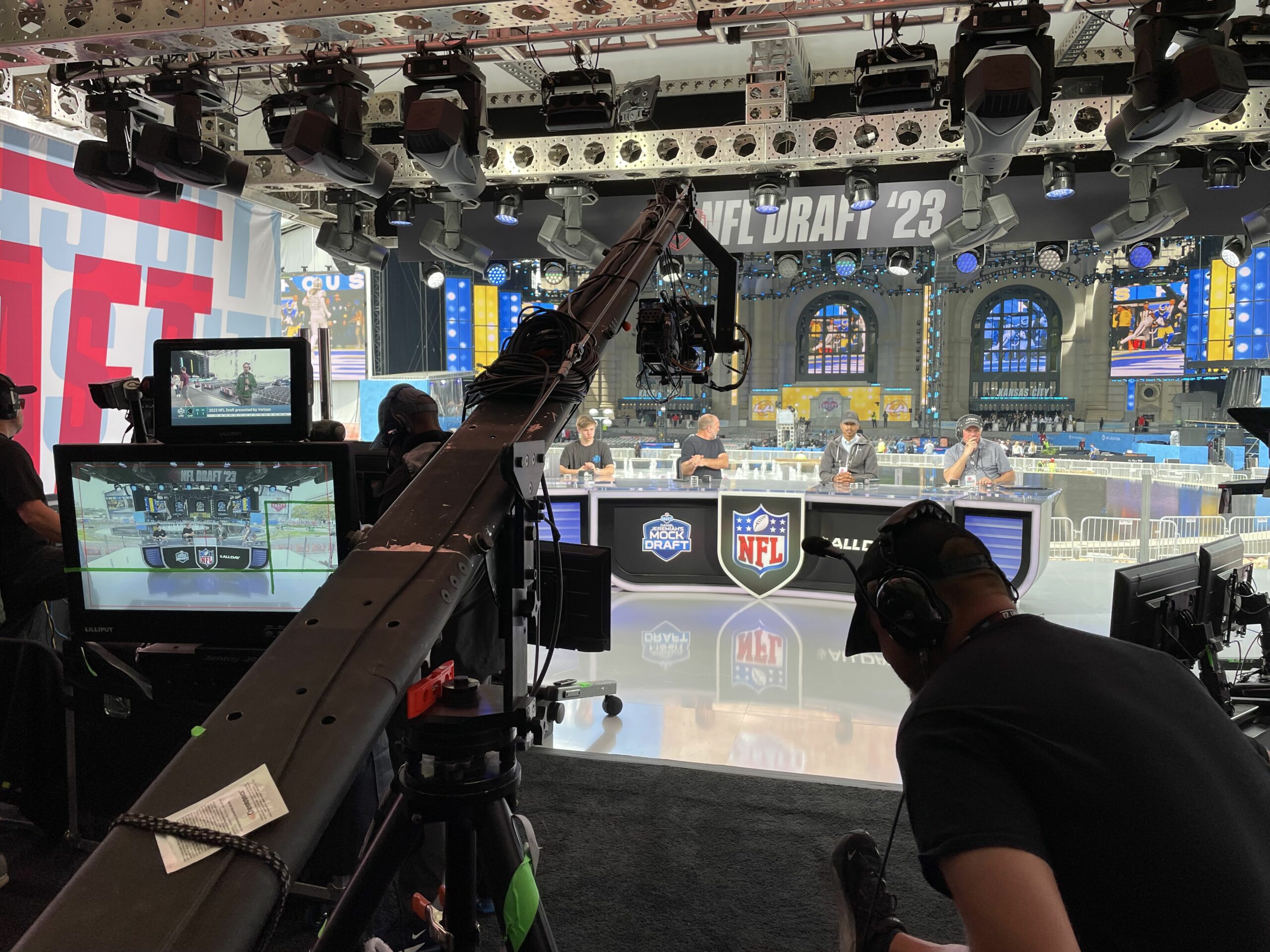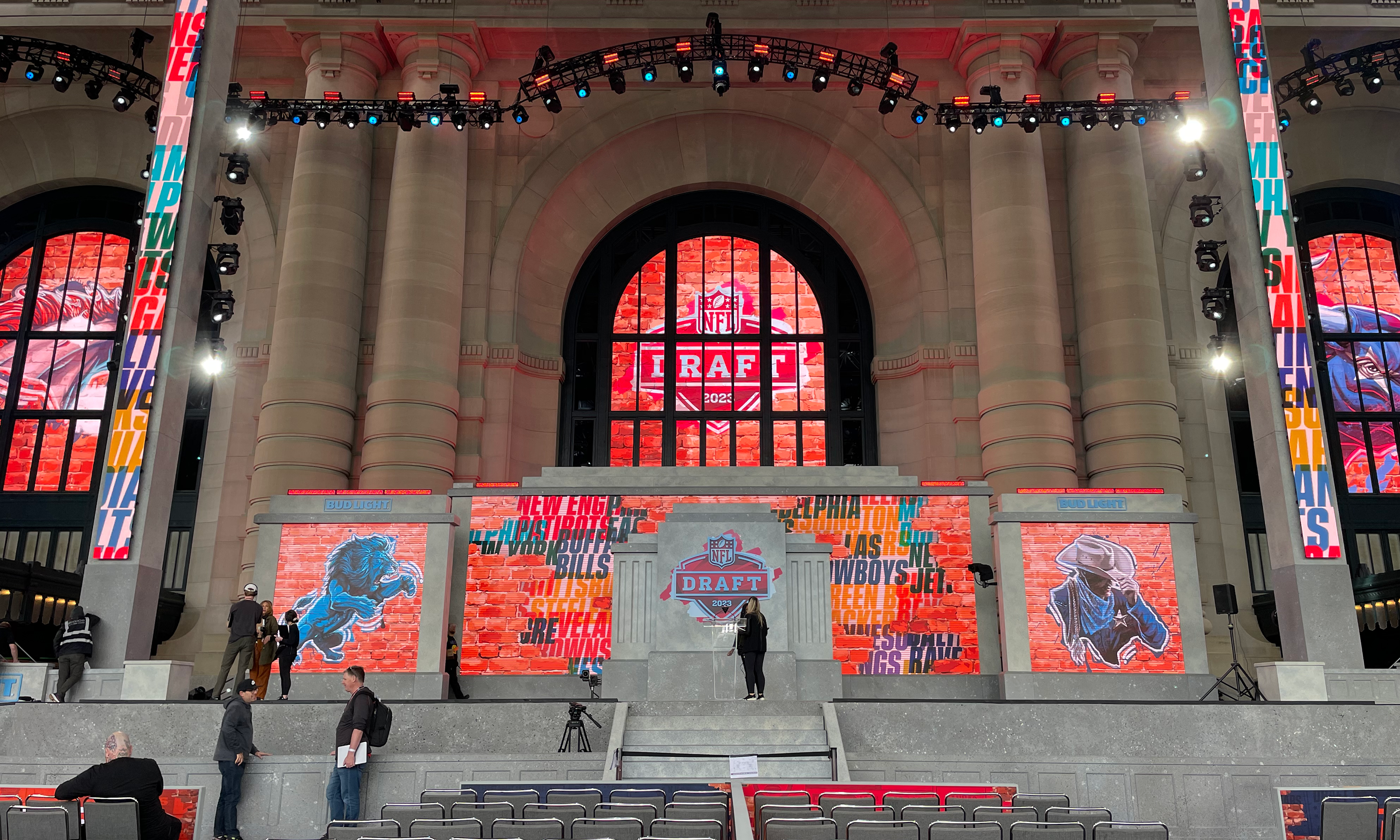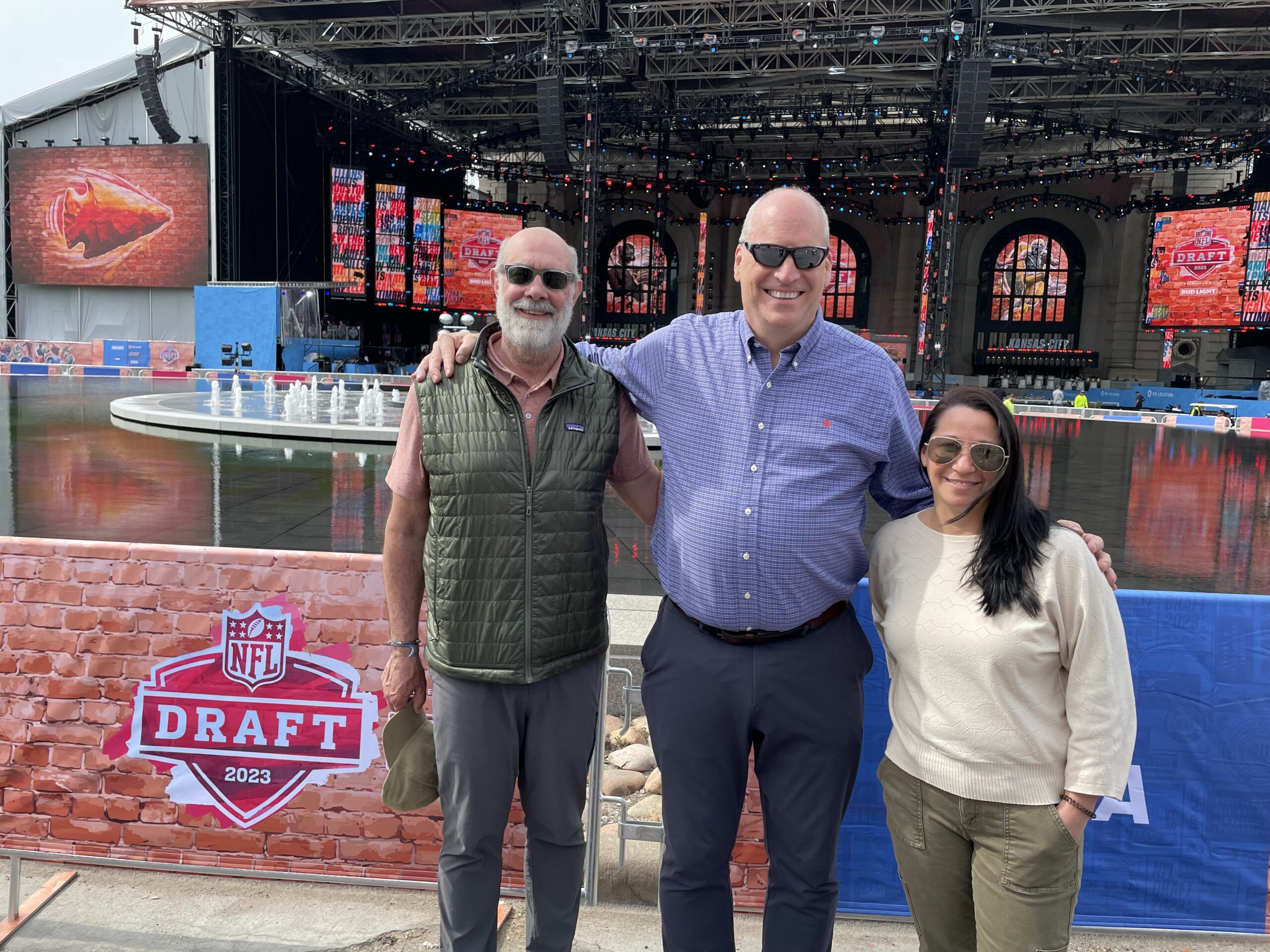Live From NFL Draft 2023: NFL Media Deploys Huge Remote Operation To Meet Demands of Largest Draft Footprint Ever
NFL Media’s Dave Shaw: It’s a lot of fun; every city offers something unique”
Story Highlights
Long gone are the days of Radio City Music Hall.
It has been nine years since the National Football League left the cozy confines of the Midtown Manhattan theater and took its annual NFL Draft “on tour.” Since then, the event has become a barnstorming roadshow with stops in Chicago (2015, 2016), Philadelphia (2017), Arlington (2018), Nashville (2019), Cleveland (2021), and Las Vegas (2022). (A virtual version was levered into 2020 during the COVID-19 pandemic shutdown.)
Each year, the event seems to grow, and the 2023 edition of the NFL Draft has the largest footprint in the event’s history.
“This has become a tentpole event for the NFL,” says Dave Shaw, VP/ head of media operations, NFL Media. “[Since moving from Radio City Music Hall,] it has become a great event for the fans, and we learned that right off the bat in Chicago. I had no idea that was what it was going to be. Nashville was one of my favorites of all time. Everybody was there all three days. It was packed. That’s when you realize you really have something with this. It has been a lot of fun, and every city offers something unique.”
The main Draft theater (which has been erected directly in front of Kansas City’s historic Union Station) is described as “larger than a football field” and measures 378 ft. long by 176 ft. wide. When you total up the entire activation — from the theater to the production compound in the bowels of Union Station to the sprawling park at the National World War I Memorial (where hundreds of thousands of fans are expected to gather over the three-day event) to other fan-activation points — the Draft covers a staggering 3.1 million sq. ft. of downtown Kansas City.
For television broadcasters like NFL Media, the wide campus means a lot of fiber (approximately 30,000 ft. of it), significant RF, and lots of steps on the pedometer for a crew totaling more than 200.
NFL Network Zooms Out on Its Coverage Style
For television coverage on NFL Network, NFL Media has two primary set positions: one in the corner of the main theater, the other outside the stage near the fountain across the street from Union Station).

NFL Media has built two studio sets for NFL Network. This one, which is across the street from the Union Station Theater, will serve as the primary anchor position for live coverage of the Draft.
ESPN has similar set options and will use its set in the theater (close to the stage) as its primary position). NFL Network, meanwhile, has decided to pull back and use the set across the street as its primary position. According to Shaw, that’s a conscious, creative choice to capture more of the event in the backdrop of the shots — a lesson learned from last year’s event in Las Vegas.
“It’s neat having our set further back and behind some of the [fans] because it’s vast, it’s big,” says Shaw. “It’s unique for us to have that. Being out in front of the Bellagio last year, we learned how neat a good backdrop is. You don’t necessarily need to be inside and right on top of the commissioner to cover the event really well.”
The big open park that accompanies the War Memorial is elevated above Union Station, offering a dramatic view of the hundreds of thousands of fans who will surely fill the space.
The sets — built in partnership with Filmwerks and powered by Sunbelt Rentals — have been overseen by Senior Director, Media Operations, Adam Acone and his team, who have been been onsite for more than two weeks getting the massive stage structure and the overall television production set up in time for Thursday’s First Round.
The onsite buildouts are done with NFL Media’s production team and the NFL Events team and supported by Senior Tech Manager Rhett VanBuskirk; Tech Managers Kory Scudder, Steve Joyal, and Ethan Balcer; and Senior Coordinator Matt Reed.
The Green Room inside Union Station, where the 17 Draft prospects onsite will wait for the names to be called, is an eye-catching spot for the television broadcast. Another ancillary set position is in a small bar/restaurant in the station lobby. Multiple Steadicams and handhelds are scattered throughout the facility to capture the prospects at their couches and to follow them from the Green Room to the stage as their names are called. NFL Media has also rigged up a DynamiCam four-point cabled aerial camera system to provide an overhead perspective on the Union Station lobby.
NFL Network’s live, three-day coverage of the Draft features a front bench of industry vets in producer Mark Teitelman and director Steve Beim. They work closely with NFL Media Senior Producer Alex Maloney and Executive Producer Charlie Yook.
NFL Network is the main distribution method for all Draft coverage, but NFL Media is using some of its set positions for unique, dedicated programming for the league’s direct-to-consumer streaming platform NFL+ and the league’s collection of FAST channels. Madelyn Grassi, senior manager, studio operations, has coordinated the many productions originating from the various stages.
‘If You’ve Got the Podium, You’ve Got a Show’
Although an event like the NFL Draft these days is covered by extensive resources, Acone joked on Wednesday that the main central hard camera that shoots the podium from which Draft picks are announced is the most critical piece of equipment on the entire show.

A platform centered on the main stage hosts the most important tool of the entire production: the hard camera shooting the podium.
“If you’ve got the podium, you’ve got a show,” he cracked, gesturing at everything built in the theater area.
That primary podium camera is set up by the league and shared by all broadcast parties, although ESPN and others have placed their own cameras on that platform as well.
In the theater, robotic cameras — five of which are provided by Fletcher — help add perspectives of the stage while minimizing blockage of sight lines for fans in attendance.
As part of the massive tent structure, NFL Media has also built a large, long JitaCam that hangs from the top of the structure. The system offers a sweeping aerial perspective of the stage and is positioned in a way where it can pick up drafted players entering the stage and follow them to the main podium.
Site Geography Presents RF Advantage
At first glance, the expansive geography of the full Draft activation seems to present only challenges. In fact, the unique layout of the War Memorial — and its elevation above the Union Station site — provides a tremendous advantage for NFL Media, both creatively and logistically.
“Since the War Memorial is elevated, it offers a tremendous point-of-view down toward the train station and the main theater location,” points out Acone.
Additionally, the operations team was able to erect RF antennas (in partnership with BSI) to extend RF-camera capabilities across the entire site. Normally, there would be limitations and the need for far more fiber than is already installed, but the high RF receive sites allow RF cameras to be deployed all the way from the main theater to the Fan Experience on the south side of the site.
NFL Media has four cameras on the Red Carpet (two RFs, a jib, and a handheld) and more RF and handhelds in the Green Room.
Extensive Transmission Network Connects Key Parties Across the Country
Of course, an event like the NFL Draft extends far beyond the host city. The NFL is working with LiveU to extend a massive network that allows live feeds into all 32 team “War Rooms” at team headquarters across the country, as well as into the homes of another 21 Draft prospects.

A DynamiCam four-point cabled aerial camera system (top right) captures aerial images from the Green Room inside the lobby of Union Station.
NFL Media VP, Studio Operations, Jessica Lee is overseeing all the remote feeds from the prospects and Draft Rooms via the LiveU infrastructure. Senior Assignment Manager Ferdinand Delostrinos is also helping manage any ENGs in the homes of Draft prospects.
In both cases, all those feeds on the matrix offer the opportunity to observe real-time reactions to picks and to conduct interviews with NFL Network and/or ESPN on-set talent.
Additionally, NFL Media’s Los Angeles- and New Jersey-based facilities are serving as valuable add-ons (as well as critical disaster-recovery sites if technical issues were to emerge onsite). VP, Engineering, Bruce Goldfeder and Senior Engineering Manager Lorey Andres oversee the engineering backbone supporting the programming at NFL LA.
With so many transmission paths in the mix, NFL Media VP, Technical Operations, Tony Cole and Director, Technical Operations, Mike Cunningham manage the transmission infrastructure between Kansas City, NFL LA, and NFL’s master-control operation in Atlanta. Everything is also backed up in Stamford, CT. LTN’s Chad McKelvey is onsite in Kansas City, assisting with the transmission end.



